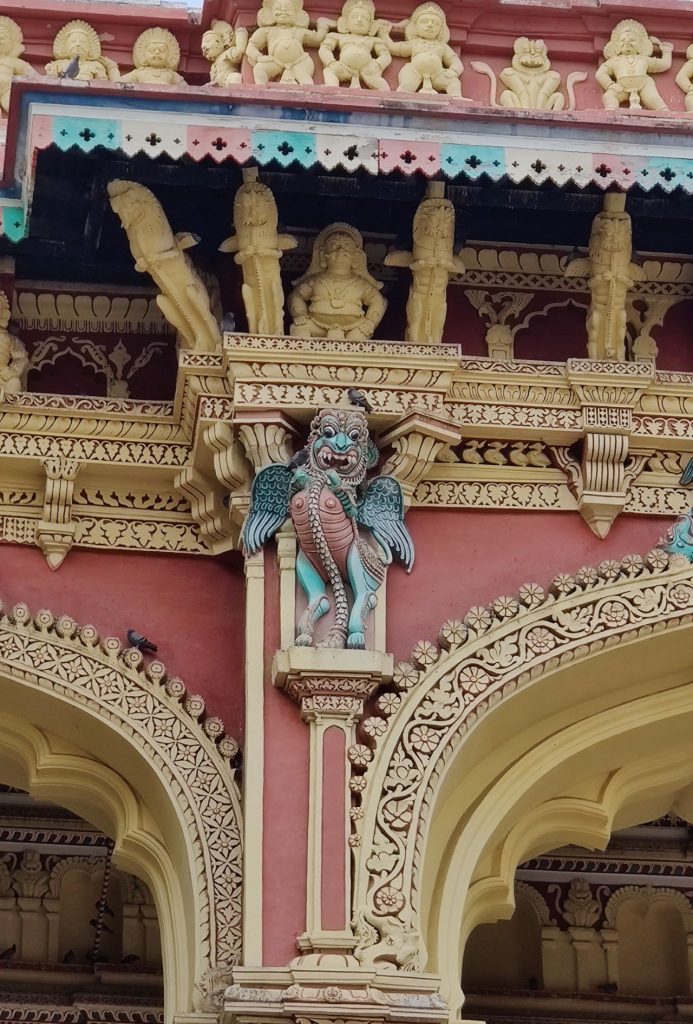Thirumalai Nayak Mahal – a 17th century palace in Madurai
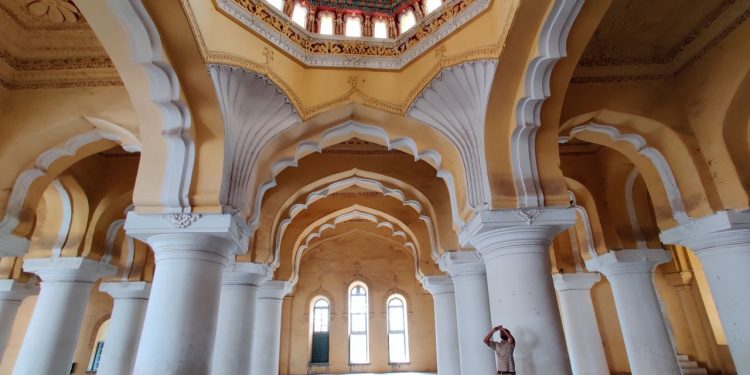
An old lady, looking very graceful with silvery strands of hair matching the silver anklets she was carrying in her hand goaded me gently to buy the trinkets. Another woman, a little more aggressive, with small bags, slung around her neck rather stylishly edged her out and persuaded me to look at her colourful wares. Surrounding them were several younger women, all selling any form of knick-knack to make a livelihood. I bought a few bags and anklets from the older women, just to make their day before entering the premises of a 400-year-old palace- the Thirumalai Nayakar Mahal Madurai.
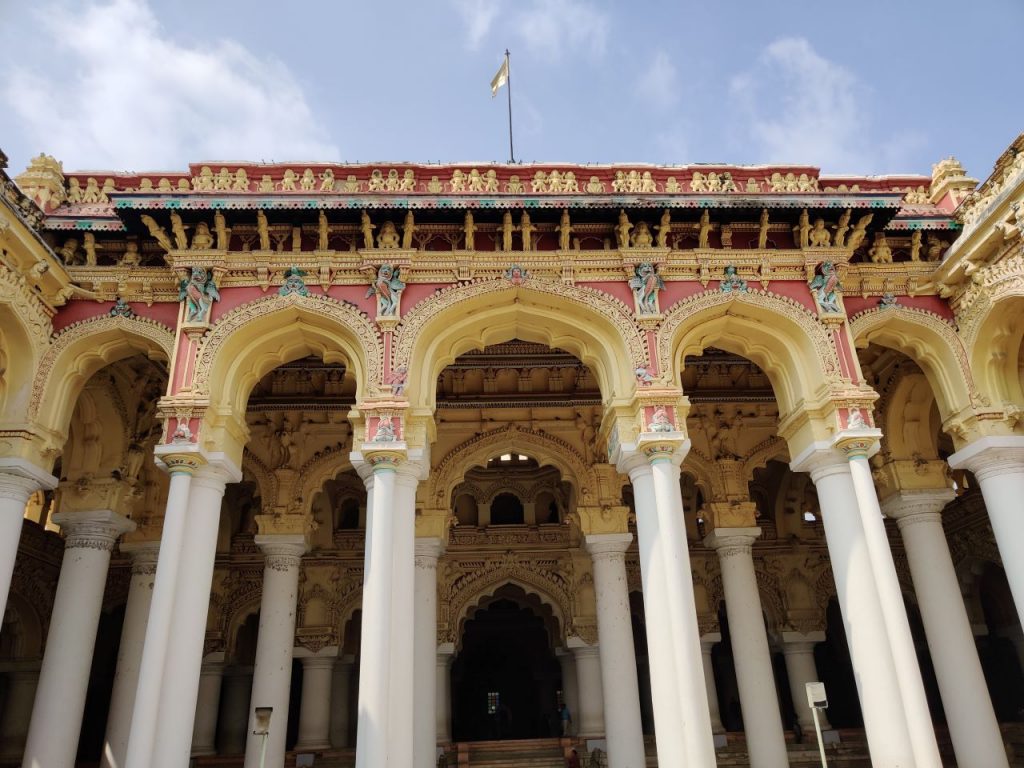

I was standing at the courtyard of the Thirumalai Nayakar Mahal Madurai and it was being renovated a little bit. The colours were looking a bit dull, but one could not but look at it in awe. In the 17th century, an Italian architect was brought in by the king, Thirumalai Nayak to design his palace. Madurai was then a hotbed of European visitors, ranging from traders and missionaries and the king wanted to make the palace one of the showstoppers of the south. It is probably one of the oldest palaces in Tamil Nadu today.
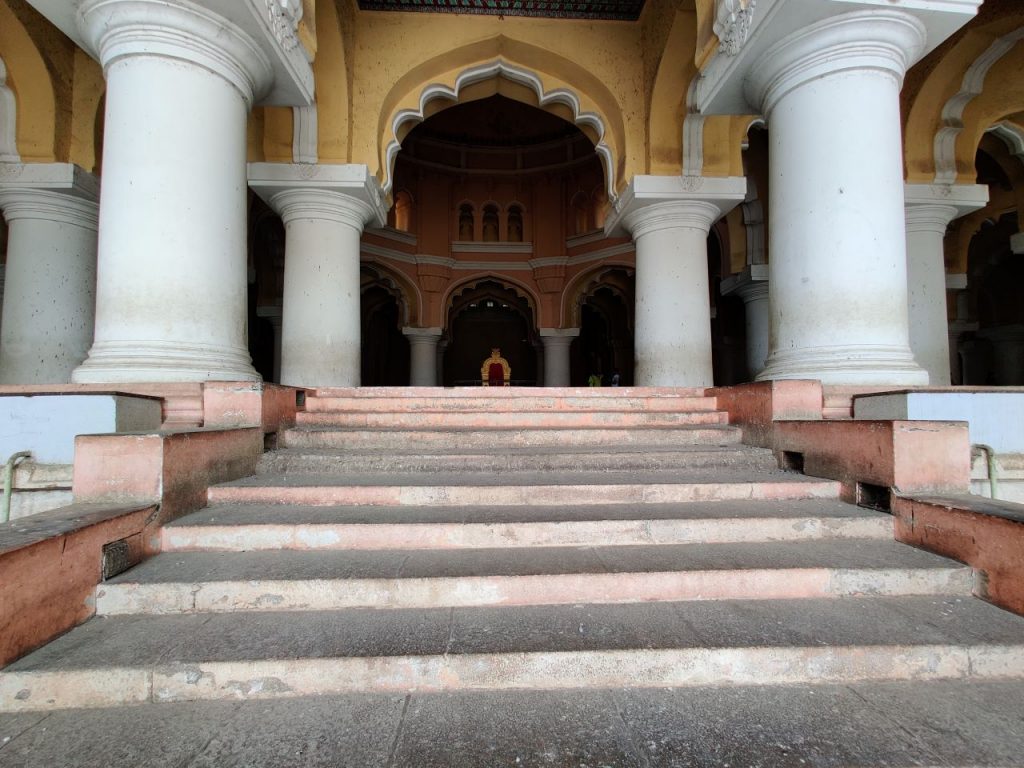
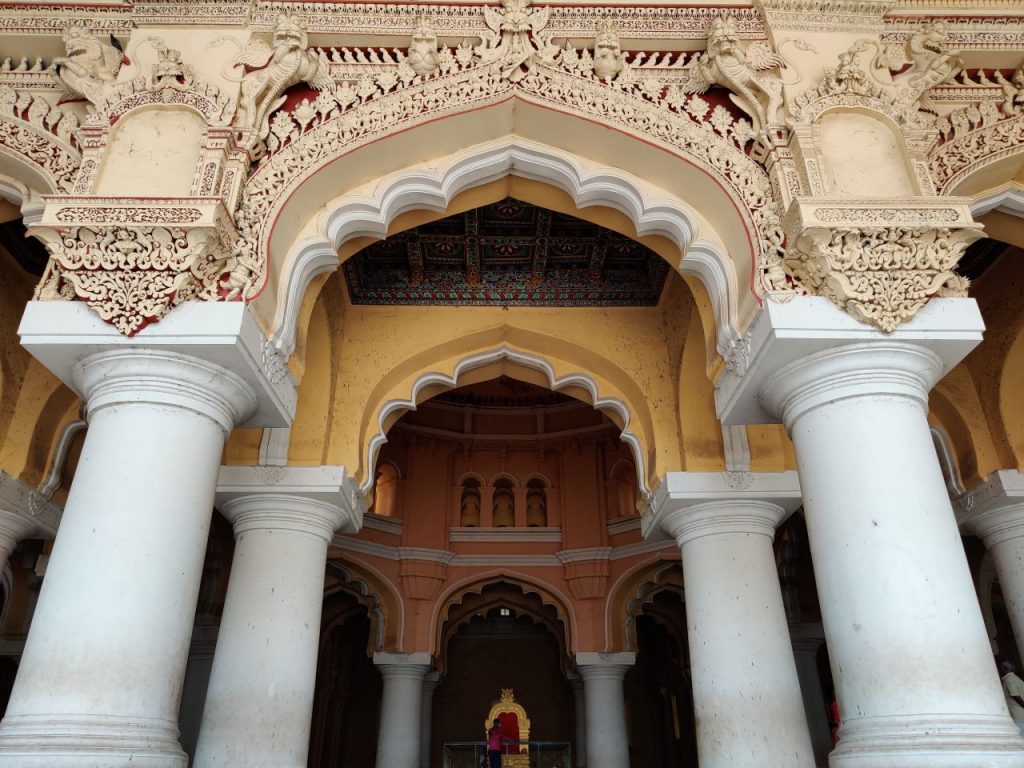
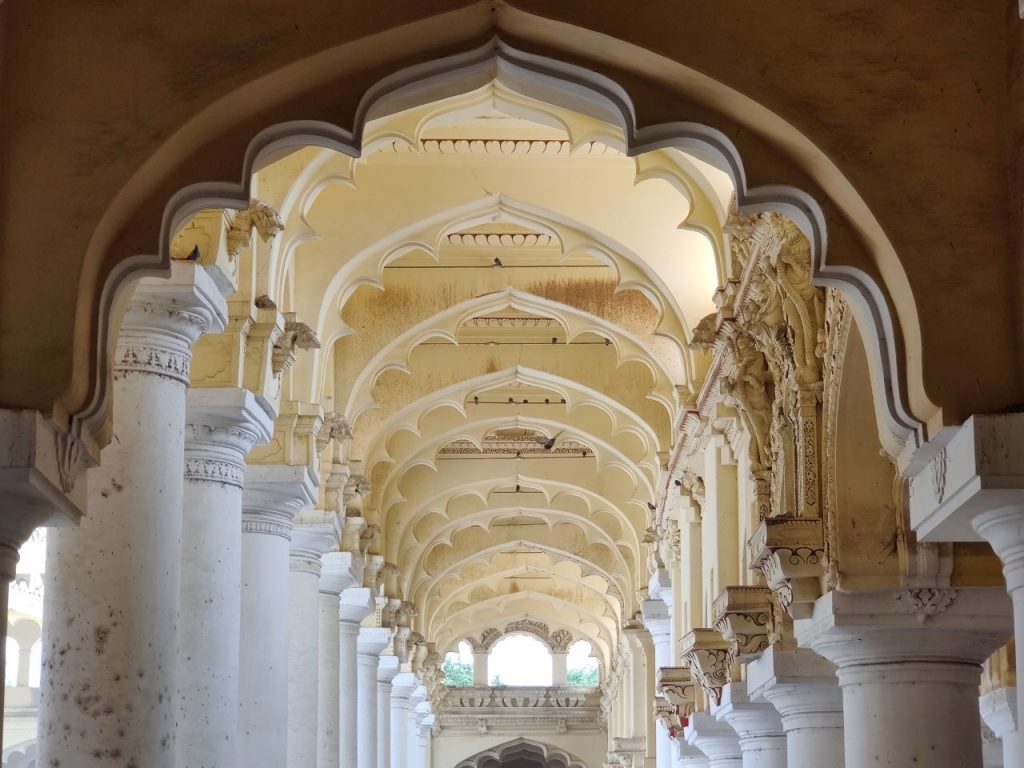
Madurai is synonymous with the Meenakshi Temple and even the Old City has been built around it with the core streets or “veedi” named after the months of the Tamil calendar like Aadi, Chitrai, Avani, Masi . While the Pandian era has its influence on the city, it’s the Nayaks who gave it a royal touch. Even today, you can see the two entrances to the Old City on the fort walls – the Pandian entrance called Vitta Vaasal and the Nayak entrance called the Western Ramparts. Thirumalai Nayak, the most powerful king of the dynasty built the palace a couple of kms away from the temple and added a couple of streets as well, one of them being outside the walls of the fort called Velli Veedi. It was also named as Thai Veedi, the month where Tamilians celebrate Pongal on the first day and the celebrations go on for a week.
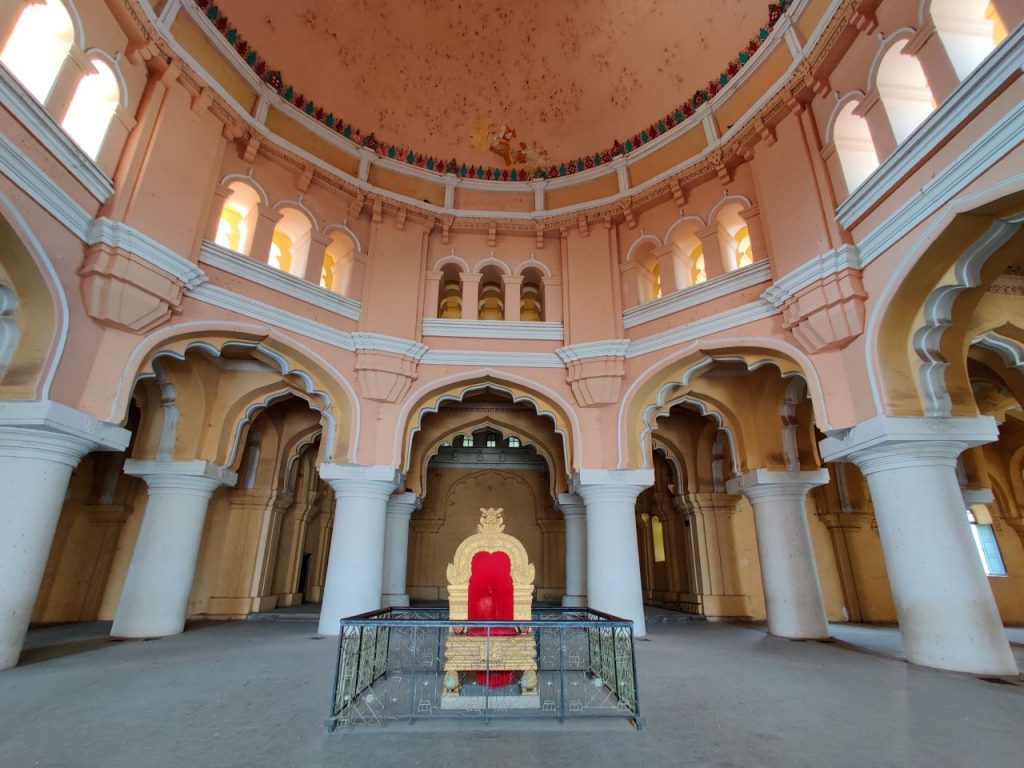
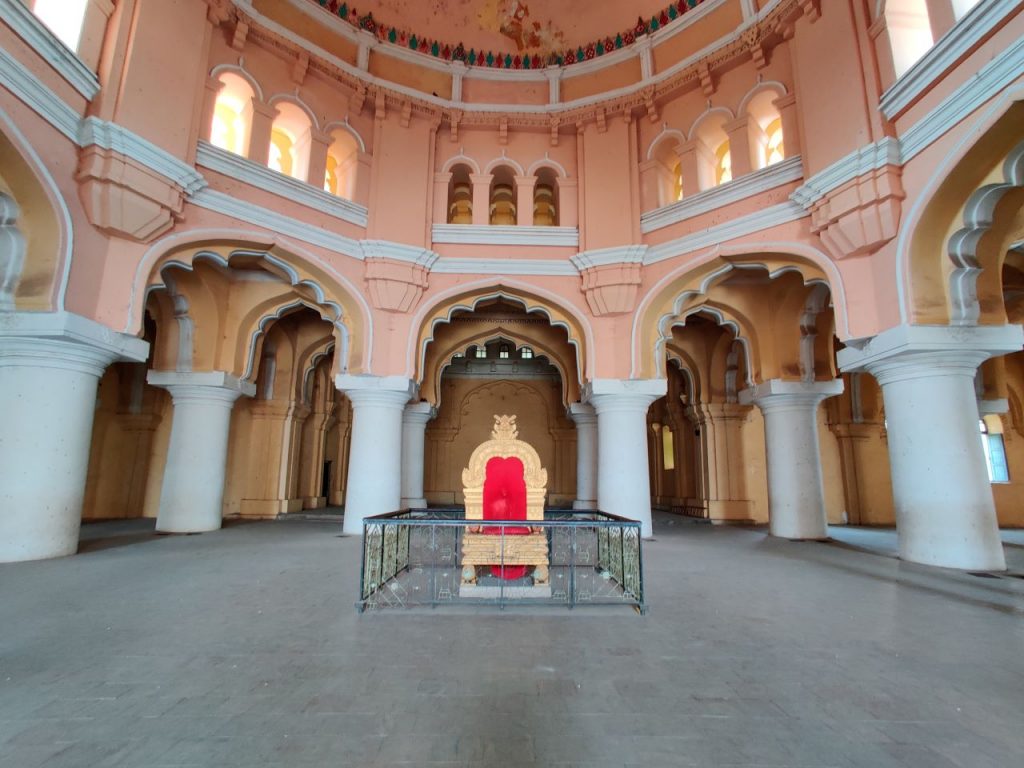
A blend of Islamic, Dravidian, Rajput and other indigenous architectural styles , the European influence could mot be missed as well. The arches and pillars with stain glass windows and motifs on the ceilings were every filmmaker’s favourite as several films were shot in this magnificent palace. The pillars were massive and one could count over 200 of them. It was believed that Thirumalai Nayak who made Madurai his capital from Tiruchirapalli, was so proud of his palace that he even rejected his queen who compared it to an elephant’s stable. Apparently, the king moved the capital to Madurai based on a dream that he had but only two generations lived here in this palace. The Thirumalai Nayakar Mahal Madurai, however, remains a landmark of the city.
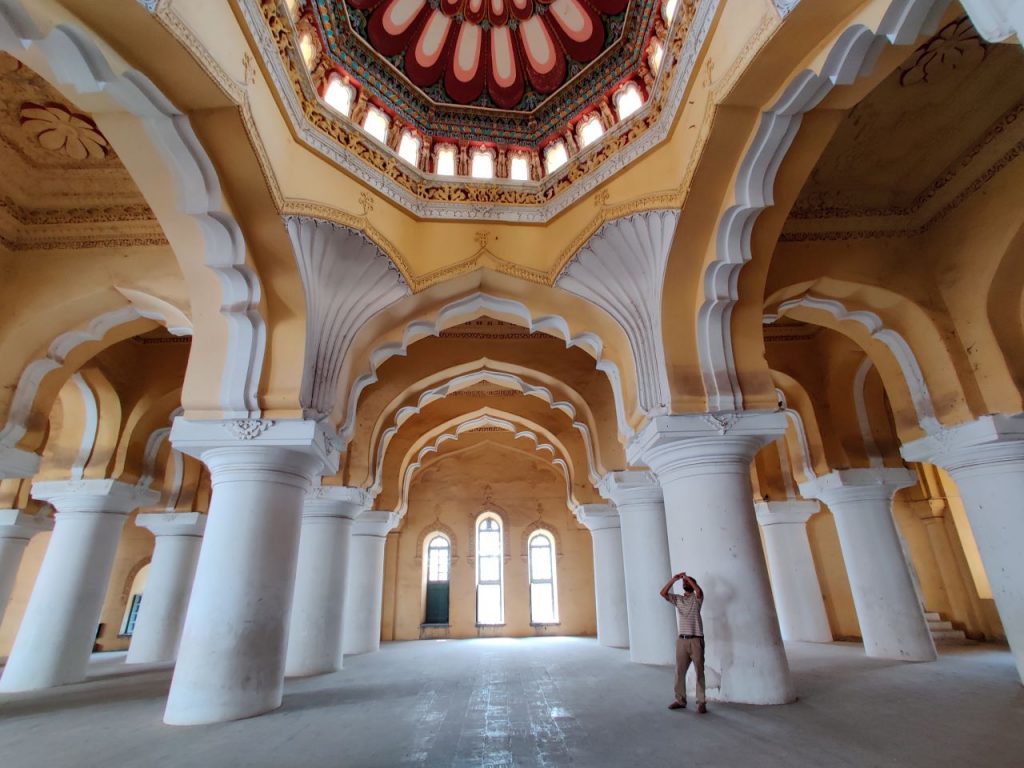
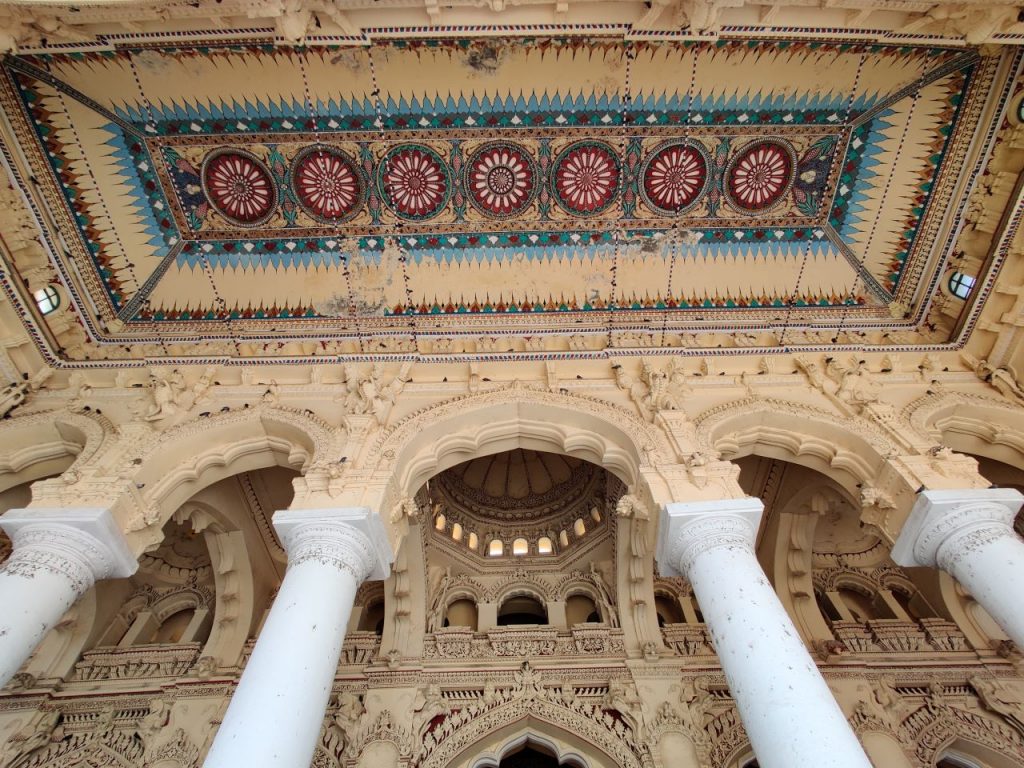
I was standing in a courtyard which covered about 40, 000 sq feet of space when I was told that the original palace, was about four times larger than the current monument. The palace was then divided into two parts – Swargavilas and Rangavilas, of which only the former remains today. It was also believed to be one of the largest audience halls to be built. The Nayaks had over 70 provinces under them and their representatives filled the palace halls every day. Hence they had to always ensure that space was never a constraint.
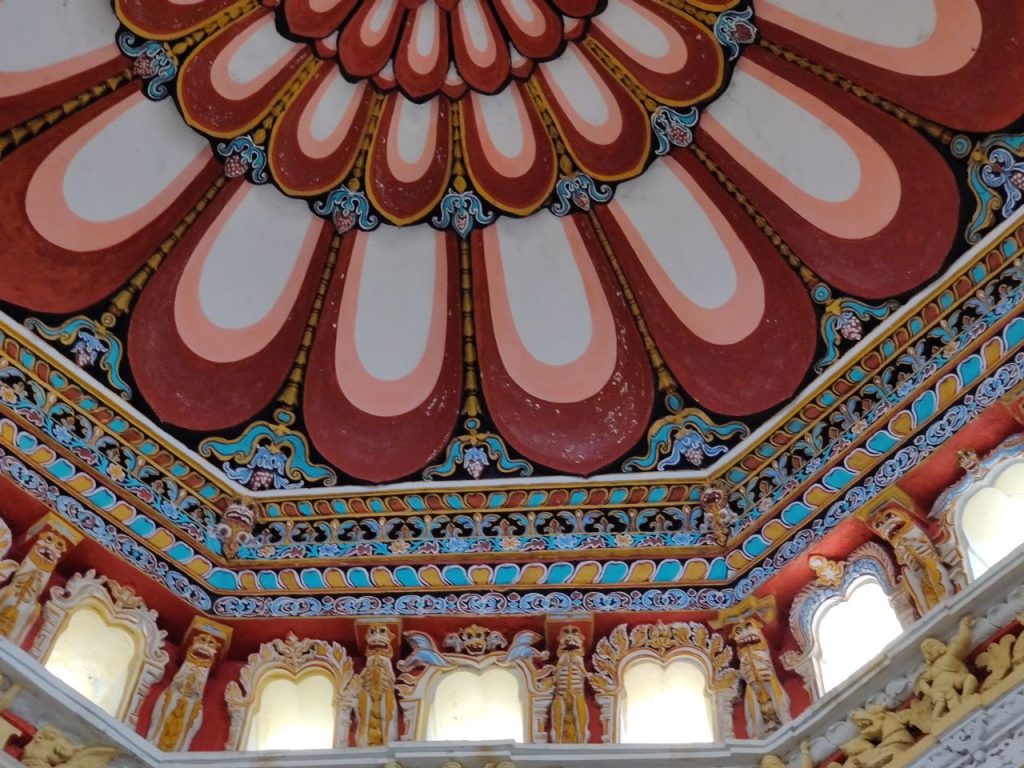
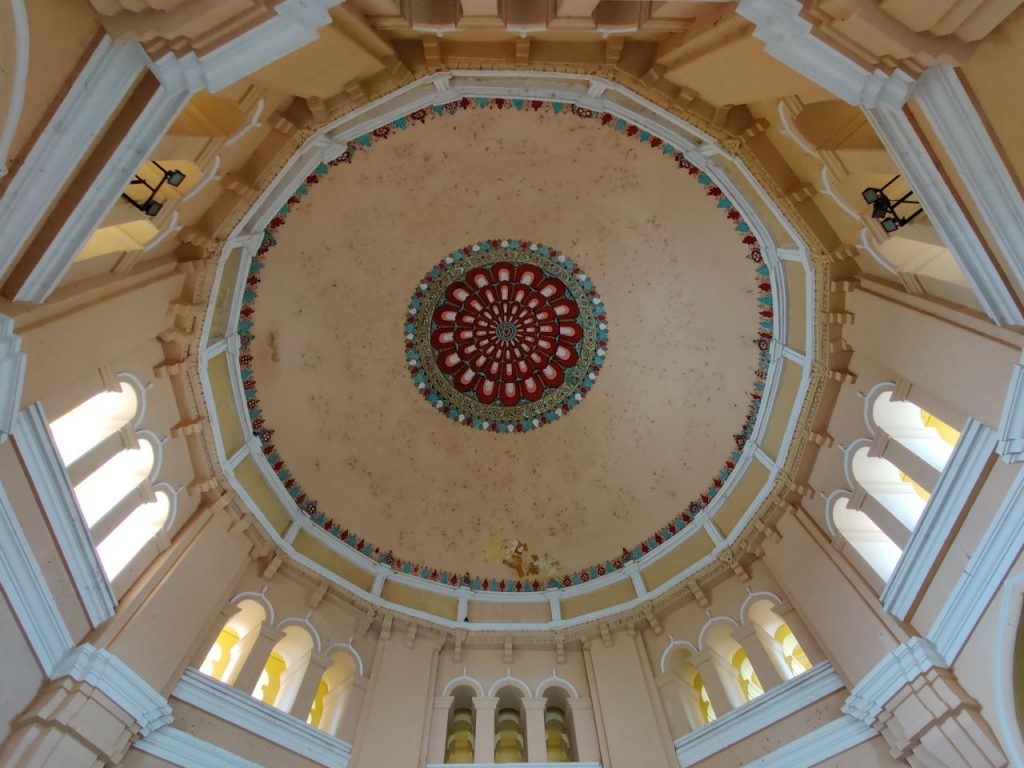
The corridors were built elevated on platforms and processions were held apparently here especially during the Navaratri era and the royal family members watched them from the galleries. There were also two watchtowers here. The Mughal influence could also be seen in the gardens that were created around the palace, but the architectural design was also borrowed heavily from European and Moorish styles.
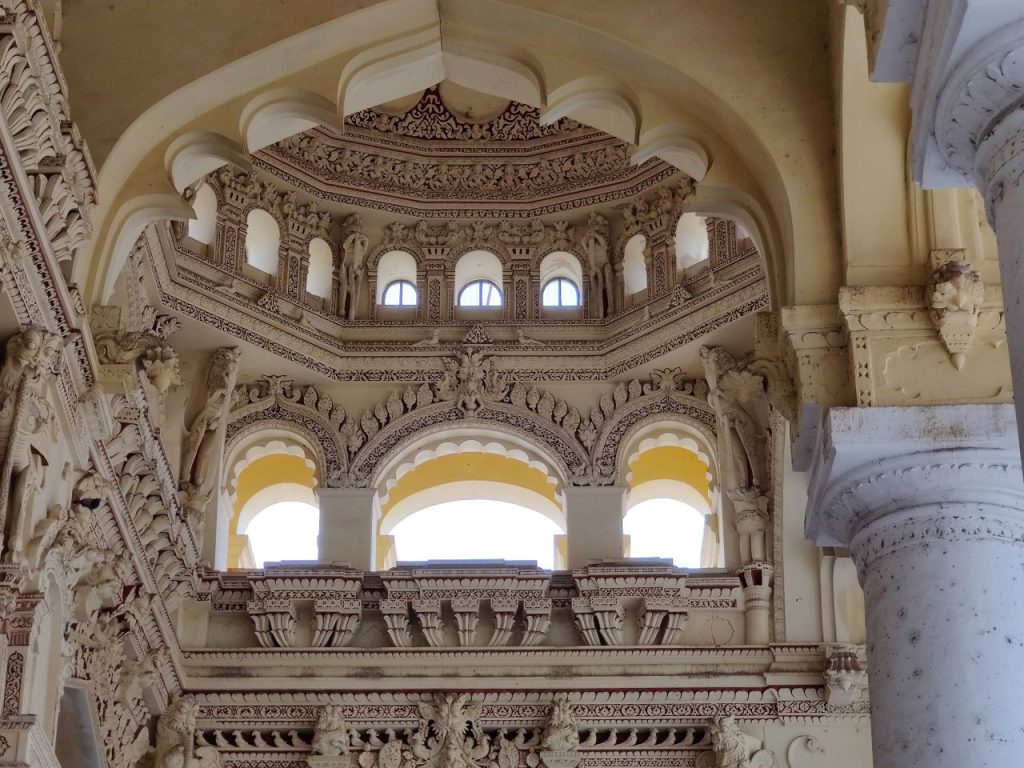
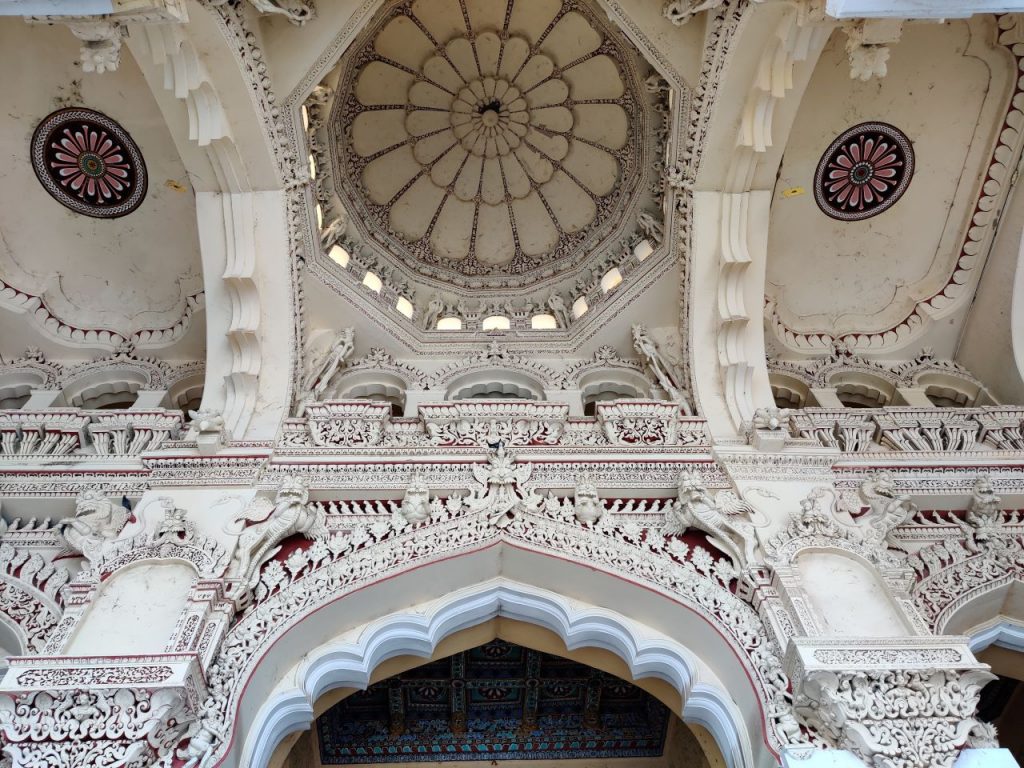
The home to the king, the palace was replete with apartments, queen’s residences, durbars, banquets, temples, theatre, gardens and ponds, but over the period of years, the buildings had crumbled and were converted into offices. The British had tried to renovate a few, but most of them became their granaries and garrisons over a period of time. The Thirumalai Nayakar Mahal Madurai was used by the British to store ammunitions but later it served as a judicial court and also housed a paper mill.

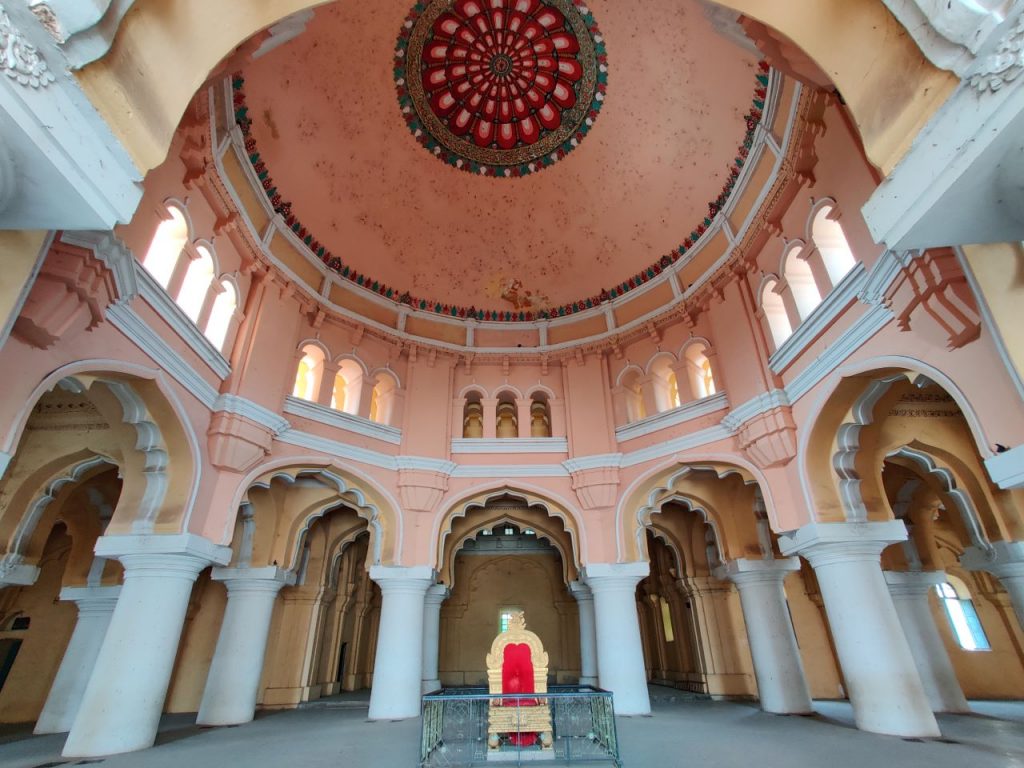
The courtyard took me into a vast audience hall where I felt like a dwarf looking at the circular pillars around me. Standing at 80 feet high and 20 feet wide, they reminded you of lost grandeur. It was the ceiling however that captures your imagination. Craning my neck, I was in awe of the intricacy and the details in the stucco work. Motifs of birds like peacocks and parakeets, animals like the mythical yali and dragon, lions, elephants, snakes and beautiful flowers like lotuses and natural elements greeted you. One of the unusual motifs was that of seashells. You could see them in the domes or in the niches. Some of these carvings seemed to have been influenced by South East Asian styles, especially the carvings of the dragons.
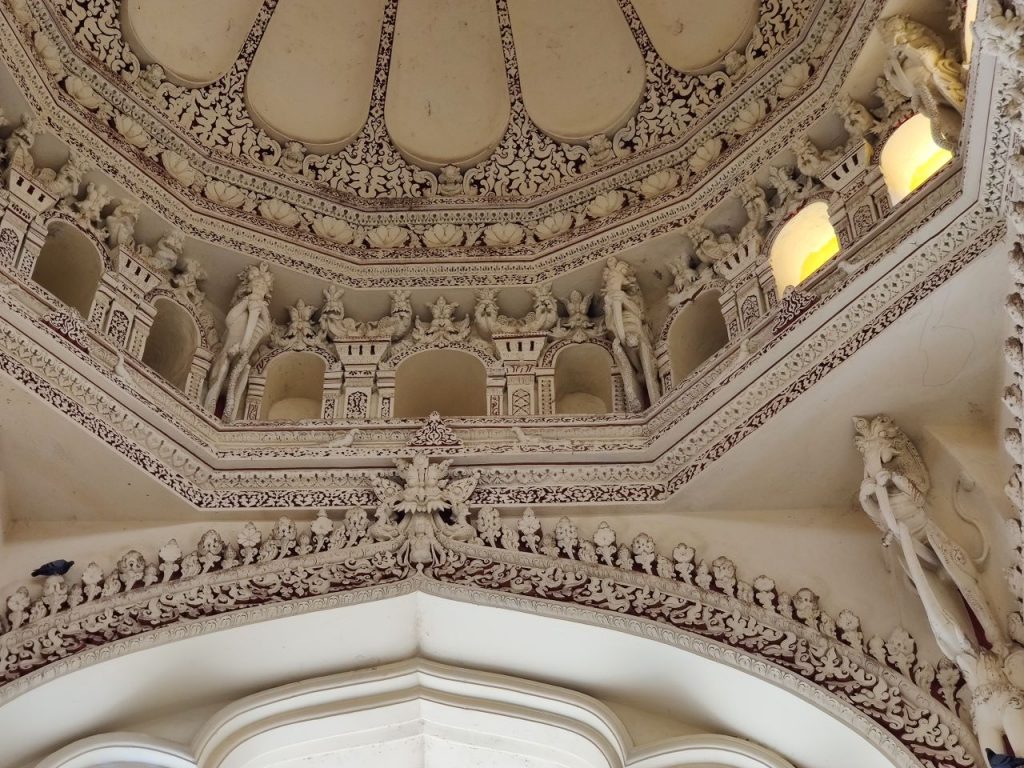
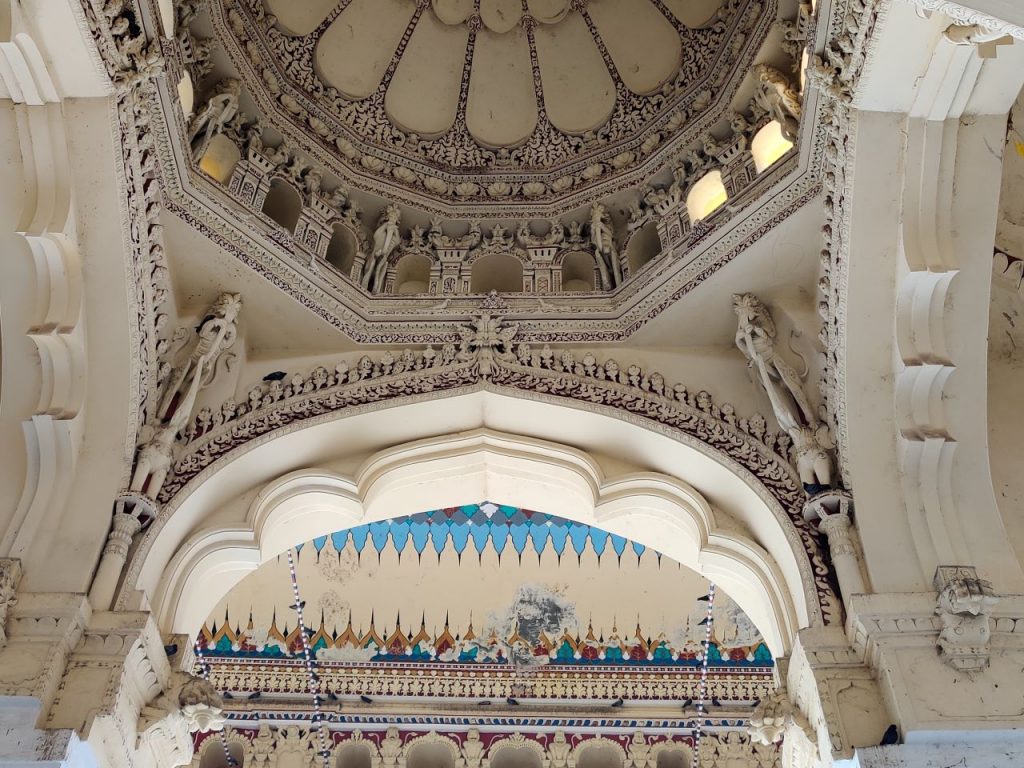
Lost in my own thoughts, I walked into a vast space covered by an octagonal dome in the ceiling below where a lone throne stood there bereft of all the attention. At one time, it was an ornate and a magnificent royal throne that was placed below one of the largest domes at 60 feet diameter on an elevated platform and decorated with ivory and pearls. Some children ignored the ‘do not touch’ warning as they tried to sit on it, while a few families posed against the throne.


Thirumalai Nayakar Mahal Madurai then opened into a dancing hall replete with sculptures and paintings. I could almost visualise the king sitting with all his courtiers watching over performance here. It was believed that not a day passed without a concert or a dance recital. Thirumalai Nayak , being a patron of the arts lived up the fanfare of those days. He celebrated the festivals in his palace with pomp and splendour.
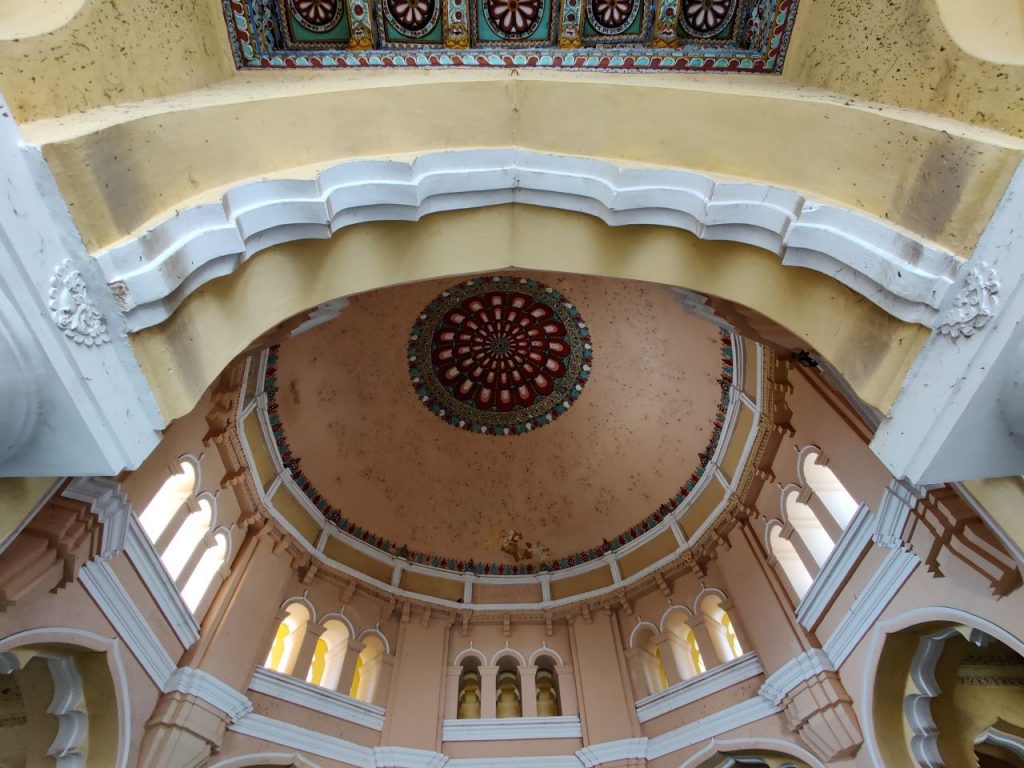
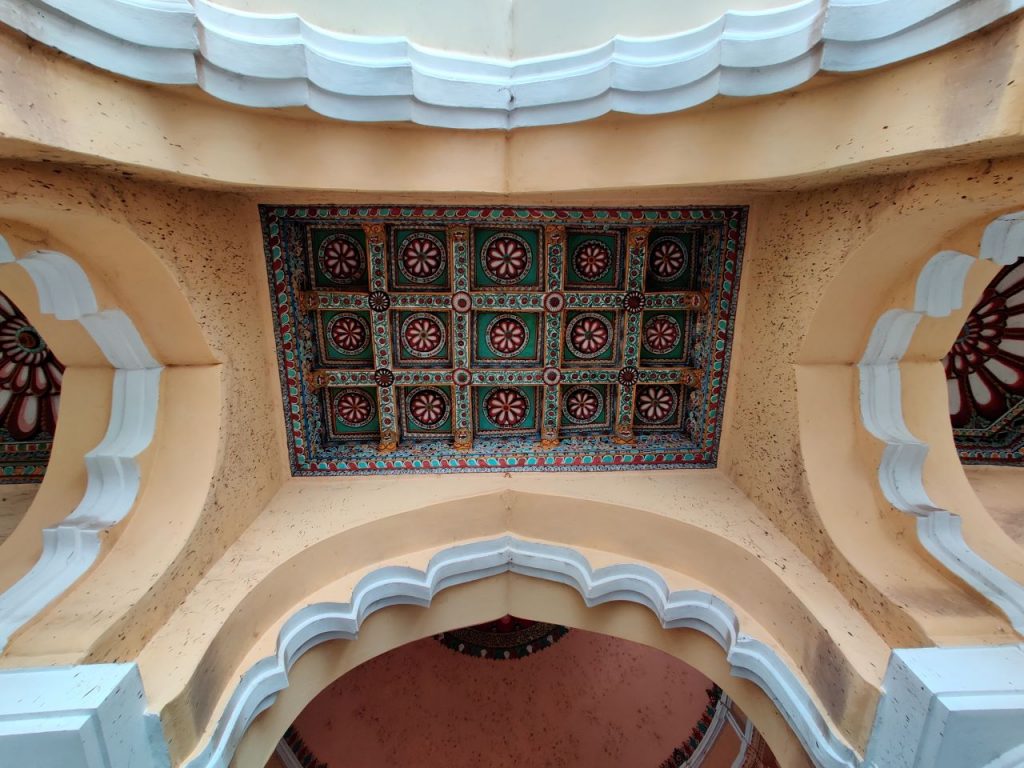
The king did not just build palaces and initiate temple festivals but he also promoted and patronised craftsmen and women, especially weavers from Saurashtra who came and settled here during the 17th century. Even today, the streets near the palace sell textiles and fabrics, especially silk and traditional sarees. It was believed that stitched fabrics came into vogue after the weavers worked their magic. There are many other streets around the palace and each has its own story. For instance, the Navabhatkana street was so-called as traditionally 19 musical instruments were apparently played to welcome dignitaries to the palace. Kizha Vasal is also known for its markets and the colourful banana market is located in Thayir Market. A rickshaw ride or a walking tour takes you into the colourful and bustling markets around the palace and temple.

As I left the palatial complex, the bells from the Meenakshi temple could be heard. A family was bargaining hard with the women, who were sweating it out in the afternoon sun. One of the older women left the crowd and sat down to open her lunch box. I chatted with her for a while, as she smiled shyly, beaming with pride over her city. The Meenakshi temple may be the crown jewel of Madurai, but the ancient city built on the banks of the Vaigai River has been left a huge legacy by the Nayaks, who ruled this region for 200 years . Especially one man, who chose to leave the capital town of his predecessors. Tiruchirapally for Madurai – Thirumalai Nayak.
